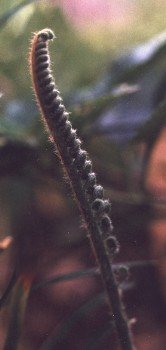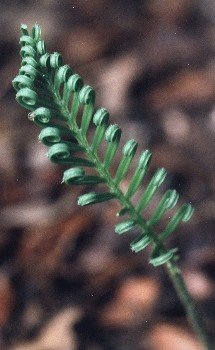Cycads from Seed
by Valerie (August 7, 2001)

We start a lot of our plants from seed. It is not only economical, but can be fascinating to watch the development as the young plant grows. In my travels to Florida, I've collected seeds from two species of cycad, an ancient group of plants related to conifers.
The smaller type of cycad in our gardens is a native of Florida and is usually called coontie (Zamia pumila). There are a few other common names, like comfort root, Florida arrowroot and contis, but seem to be a plethora of species names that are either synonyms or refer to different related species. These include angustifolia, debilis, floridana, integrifolia, portoricensis, silvicola, and umbrosa. Coontie is a popular landscape specimen plant in Florida, but here it must be protected in the winter. There are also quite a variety of leaf sizes and plant sizes, from very small to huge.
Cycads are gymnosperms and need both a male and a female plant to reproduce. Both plants produce cones, with the female, of course, bearing the seed cones. Pictured above is a mature coontie seed cone. I simply stuck the seeds in the ground and a couple years later noticed that we had a small plant with a single leaf. It has since produced a new leaf each year and now has two at the same time. In the winter I pile leaves on top of it for protection from freezing.
The growth of a new cycad leaf is a study in grace, as the fronds slowly uncurl, grow, and stiffen.



|

